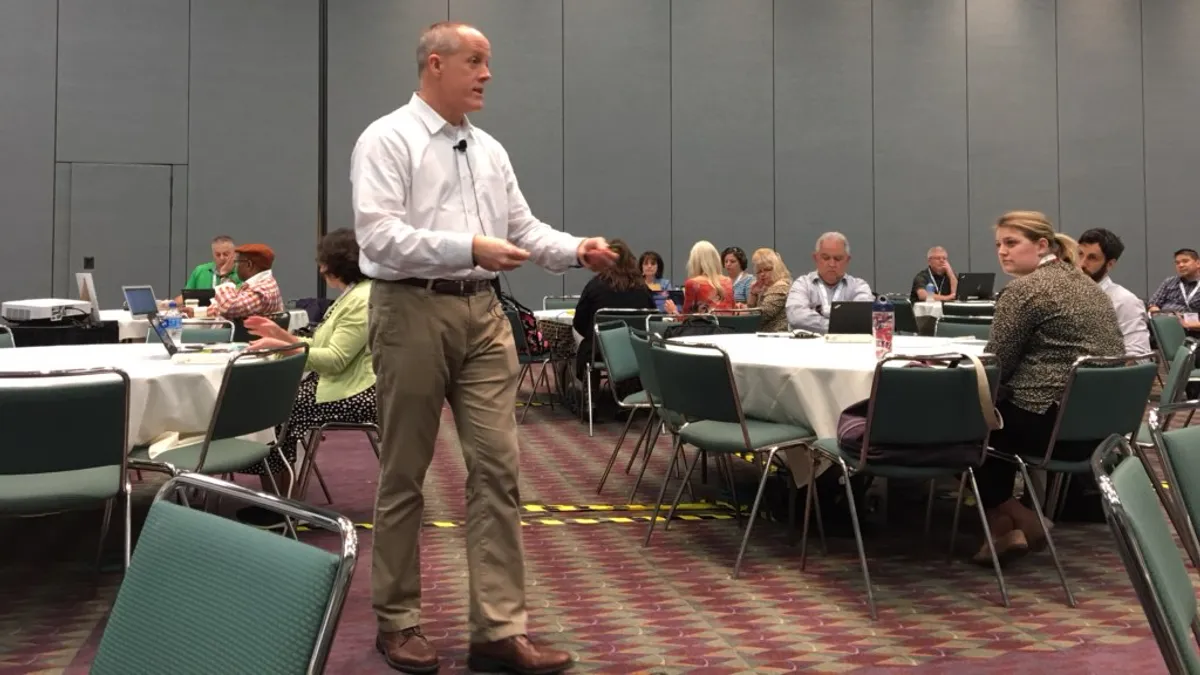Dive Brief:
- To design learning spaces that matter, educators must move from "setup" and "decorator" mindsets to a "designer" approach, Robert Dillon, the director of innovative learning for the School District of University City (MO) and co-author of "The Space: A Guide for Educators," told attendees at the Future of Education Technology Conference Tuesday.
-
Embracing a designer mindset will require navigating the hundreds of "micro-decisions" made about classrooms every day to find the choices that students would love to make and feel would help their learning.
- To do this, school leaders and classroom educators will need to gain student input, test how students interact with limited numbers of new furniture items before making broader purchases, find solutions that fit within budget constraints and consider that spaces will vary based on needs and subjects.
Dive Insight:
As the workforce shifts to favor more open and collaborative environments, schools are also moving toward classroom redesigns that will best prepare students for those workplaces. But differing budget realities between schools and districts lead those like Dillon to worry that learning spaces could become yet another frontier in the educational equity debate.
Creating a space that incorporates student voice doesn't have to break the bank, though. Dillon encourages educators to think about the core things that need to happen for their space, which will vary by classroom and subject, as well as who will be using that space — whether students or teachers. Color, sound, accessibility, light and other “micro-decision” factors should be top-of-mind.
He cited one example: A counselor needed a place for students to de-escalate, and wanted a community feel because groups of students use the space. Their space was redesigned to add a fluffy pad, a swing and a bench (as well as additional decor) for around $800 total. One way to save money is to opt for IKEA furniture, which is more affordable and should last long enough until the next classroom redesign is needed in 5-10 years.
Additionally, he talked about deciding how long to let students learn on their own. The crest of the wave when the volume starts to come down after pleasantries are exchanged at the beginning of a task can be a tempting place to interject, he said, but you have to allow time for the second wave to happen for ideas to really start to be exchanged.
“What you do in your space will be great," Dillon told the crowd, adding that if they can "parlay" it for a whole department or grade level or school, it can lead to much greater change. He cautioned, however, they must also be sure to think deeper than just decor, recounting a story of a young student unsure of how to tell the teacher that the decorations in the space were at a level that was distracting.
He closed with a challenge: Find three subtractions, two additions and one augmentation (slight change) in your classroom that you can make.













